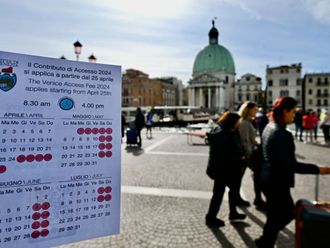Dubai: The Middle East is expected to see an additional 86,000 hotel rooms between 2014 and 2020, according to a report by global hospitality consultancy HVS.
There are currently 130,000 rooms in the region and 11,000 rooms that have not been assigned completion dates, HVS said in the report titled “2015 Middle East hotel survey peak assessments”.
Most of the new inventory in the region is in Saudi Arabia, where 38,000 hotel rooms are expected to come online, bringing the total to 59,000. The kingdom is followed by the UAE, with around 26,000 rooms being planned and built.
Hilton Worldwide, a US-based hotel chain, has the biggest pipeline in the region with 20,000 rooms under development, as per the report.
“As new supply enters the market, tourism officials will need to work even harder in order to ensure that demand grows in line with supply, keeping ahead of, or at the very least up with, the considerable additional room nights expected over the course of the forthcoming years,” HVS said in the report.
Dubai, for instance, is targeting between 140,000 and 160,000 rooms to accommodate 20 million visitors per year by 2020, according to the Department of Tourism and Commerce Marketing (DTCM). The emirate is developing leisure facilities, which will attract more tourists, including Dubai Parks and Resorts, a theme park that is set to open in October next year, and Six Flags, slated to open in 2017.
The number of tourist arrivals in the Middle East reached 50 million in 2014, up 3.8 per cent compared with the previous year, HVS said in the report, citing data from the United Nations World Tourism Organisation (UNWTO).
Total contribution of travel and tourism to gross domestic product (GDP) was up 5.3 per cent last year compared with 2013, according to the report. Contribution to GDP is driven by domestic, leisure tourism and business tourism spending.
Direct contribution to GDP, meanwhile, is expected to contract 1.8 per cent in 2015 due to regional conflicts, the weaker euro and western economic sanctions against Russia, HVS said, citing data from the World Travel and Tourism Council (WTTC).
However, in the next ten years, the region is likely to see close to 6.4 per cent compound annual growth rate in direct contribution to GDP. Regional travel and tourism spending is expected to exceed $200 billion within the same period.
“As stability returns to sub regions, the tourism in those areas that are currently in turmoil will rebound slowly as the market tracks the evolution of its stability … several markets in the region have proven their resilience before so that any marginal improvements in macroeconomics, local political or local economic conditions will likely stimulate the local tourism sector to peak anew,” the report stated.












